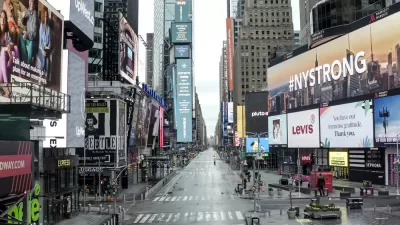California's population growth slowed to 1.1% according to the state Dept. of Finance, down from 1.3% last year. Current population is 38.3 million. The LA Times looks at southern CA growth while the SF Chronicle reports on Bay Area growth.
"As California began nose-diving into a recession last year, its population growth flattened out, with some of the most significant slowing occurring in once-burgeoning inland areas such as Riverside County.
Riverside County, one of the fastest-growing areas in the state for several years, has been hit hard by high unemployment and foreclosure rates. It grew by 1.4%, compared with 2.4% the year before and an average of about 4% annually since 2000, state records show."
From San Francisco Chronicle:
"Population in California's cities and counties remained mostly stable as the state's population growth slowed to 409,000, or 1.1 percent, during 2008, down from 1.3 percent the previous year.
San Jose became the 10th city in the United States to surpass 1 million residents, while all Bay Area counties grew last year,
The state remains the largest in the nation, with a population of nearly 38.3 million, accounting for 12.5 percent of the U.S. population. The Department of Finance population estimates are traditionally higher than those of the U.S. Census Bureau because the state uses different data, including driver's license information, school enrollment and residential construction and demolition."
Thanks to MTC-ABAG Library
FULL STORY: California population growth flattens out

Manufactured Crisis: Losing the Nation’s Largest Source of Unsubsidized Affordable Housing
Manufactured housing communities have long been an affordable housing option for millions of people living in the U.S., but that affordability is disappearing rapidly. How did we get here?

Americans May Be Stuck — But Why?
Americans are moving a lot less than they once did, and that is a problem. While Yoni Applebaum, in his highly-publicized article Stuck, gets the reasons badly wrong, it's still important to ask: why are we moving so much less than before?

Research Shows More Roads = More Driving
A national study shows, once again, that increasing road supply induces additional vehicle travel, particularly over the long run.

Judge Halts Enforcement of Anti-Homeless Laws in Grants Pass
The Oregon city will be barred from enforcing two ordinances that prosecute unhoused residents until it increases capacity and accessibility at designated camping sites.

Advancing Sustainability in Los Angeles County Schools
The Los Angeles County Office of Education’s Green Schools Symposium brings together educators, students, and experts to advance sustainability in schools through innovative design, climate resilience strategies, and collaborative learning.

Using Old Oil and Gas Wells for Green Energy Storage
Penn State researchers have found that repurposing abandoned oil and gas wells for geothermal-assisted compressed-air energy storage can boost efficiency, reduce environmental risks, and support clean energy and job transitions.
Urban Design for Planners 1: Software Tools
This six-course series explores essential urban design concepts using open source software and equips planners with the tools they need to participate fully in the urban design process.
Planning for Universal Design
Learn the tools for implementing Universal Design in planning regulations.
City of Moreno Valley
Institute for Housing and Urban Development Studies (IHS)
City of Grandview
Harvard GSD Executive Education
NYU Wagner Graduate School of Public Service
City of Cambridge, Maryland
Newport County Development Council: Connect Greater Newport





























